How to get a bird’s-eye view of the Google SERPs
Columnist Stephan Spencer provides an overview of a new rank tracking tool that goes much deeper than the "10 blue links" mindset.

There are a lot of tools that track keyword rankings, and you may already be using one. These days, it’s insufficient to merely track keyword rankings within the “10 blue links,” as you are only capturing part of the story when it comes to your site’s SEO performance. Over the last several years, Google has enhanced the SERPs (search engine results pages) significantly and it will continue to do so as time goes on.
These Google SERP enhancements, which are also known as “SERP features” in the industry, not only include the now-ubiquitous answer boxes which answer a query directly in the SERPs, but also encompass a wide range of enhancements such as:
- local map packs,
- breadcrumbs,
- video thumbnails,
- image and news results,
- reviews and
- featured snippets.
This has changed the game for many online marketers. Ranking above your competitor is no longer a guaranteed win if that competitor has an answer box that gets a lot of click-throughs and you don’t.
A new, free research tool from Rank Ranger, “Google SERP Features,” helps SEO practitioners keep tabs on the fast-changing Google SERP landscape. The tool analyzes the Google page one SERPs for more than 500,000 keywords and compiles both frequency and trend data for the more than 20 SERP features it tracks for you so that you can see daily fluctuations, as well as trending data, over 30 days.
In the figure below, we can see the frequency of appearance in the search results for all of the various answer box types. Some of these aren’t surprising — the popularity of the map result, for example — but I wouldn’t have guessed that a disambiguation answer box was present in one percent of all search results.

Figure 1: How frequently various answer box types appear in Page one SERPs
This tool tracks the schema and Knowledge Graph SERP features such as featured snippets, video thumbnails and knowledge panels; and it tracks “special indicators” that you might not initially think of as SERP features, such as the frequency of HTTPS URLs in the top SERPs, how often Google ads appear and how common sitelinks are.
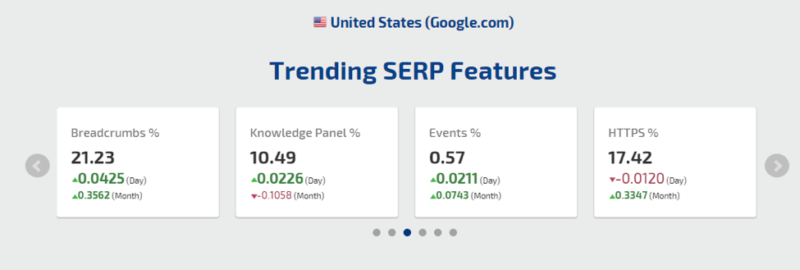
Figure 2: Four Trending SERP Features
There are 24 trending SERP features that you can get a daily update on, as well as the monthly trend. To get a better look at the trend over 30 days, you can scroll down to the SERP Insights section, which is configurable to display whichever SERP feature you might be interested in.
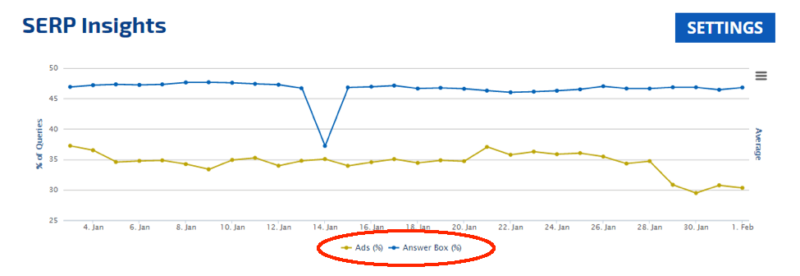
Figure 3: SERP Insights and Trends for ads and answer boxes for a month
In the above screenshot, we can see a day-by-day analysis of two SERP features: ads and answer boxes. Note that the frequency of answer boxes went down a full 10 percent in a single day on January 14, only to bounce back on January 15 — so if you happened to be browsing the SERPs that day to get a feel for the popularity of answer boxes in your niche, you now know the 14th was not a typical day.
We can also see that at the end of January, ads are being shown for around 10 percent fewer search queries, so maybe that uptick in your CTRs at the end of the month is simply due to the additional percentage of screen real estate dedicated to the organic results.
It would be nice to have more than 30 days of data to really be able to see trends develop. The daily and monthly tracking is nice, but a comparison of year-over-year data will be even better. Hopefully, we’ll see that with the next iteration of the SERP Features tool. That said, the tool does provide a way to download screenshots, so with some work, you could put together your own library of tracking data.
If you click on the “Settings” button, you can explore the rest of the SERP features that are tracked in the SERP Insights area. These are grouped into four categories:
- Indicators (such as HTTPS and Breadcrumbs),
- Knowledge Graph Features (includes the Various Answer Box types and Featured Snippets),
- Results Count (you can select 10 Results all the way down to 5 Results) and
- Extras (which include Images, Ads, Local Pack and Related Search).

Figure 4: Configuring SERP Insights for the SERP Features you are interested in
Then it is just a matter of selecting what attributes you want to show on the graph.

Figure 5: SERP Insights configurable to show trends for: HTTPS, Related Search, Result per Page, Breadcrumbs, Local Pack, Review and Image Results.
In the above screenshot, we can see the volatility (and downtrend) of “Results per Page” compared to the other more stable SERP Features. It’s also interesting to see how prevalent HTTPS is among the top ranking URLs, especially compared to the other SERP Features, such as Image Results. To get the details, mouse over the daily points on the trend line.

Figure 6: SERP Insights details for Monday, Feb. 15
However, despite the daily volatility for the organic results count in Figure 5, 10 links per SERP still dominate, as we can see in the “Organic Results Count” section.
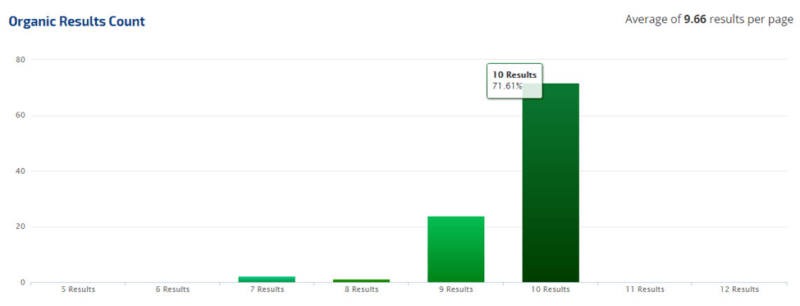
Figure 7: Organic Results Count Distribution and Average
Want to see examples of Google’s metadata in action? Scroll down to see snippet examples of all the SERP features, including all the various answer boxes. Below is an example of what the “Notable Online” indicator looks like in the wild.
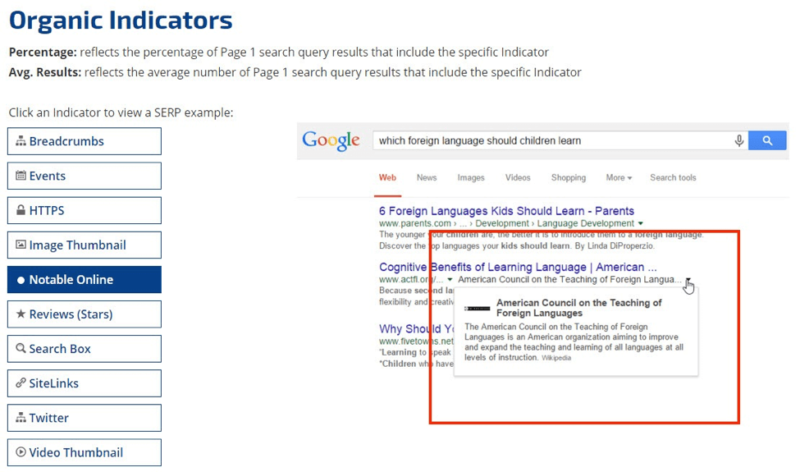
Figure 8: Examples of Organic Indicators
Global search intelligence
Rank Ranger’s tool is not limited to Google.com. At the top of the page, you can select any of the Google country sites and get the same trending data for all of the SERP Features as we have described above.

Figure 9: Select the Google country site you are interested in getting SERP feature data for.
There is also a “Global Search Intelligence” page where you can get an aggregate global view for these same reports. You can sort and compare by country for all of the Google SERP Features.
For businesses with an international presence, this could help fine-tune your SEO strategy because you can differentiate your efforts by country.
For example, there are many countries where Google is not yet showing featured snippets, including google.fr, google.nl and google.pt, and additionally, answer boxes are most prevalent in the English-speaking countries, so reworking your content in the hopes of getting an enhanced SERP is currently best done for your English sites.
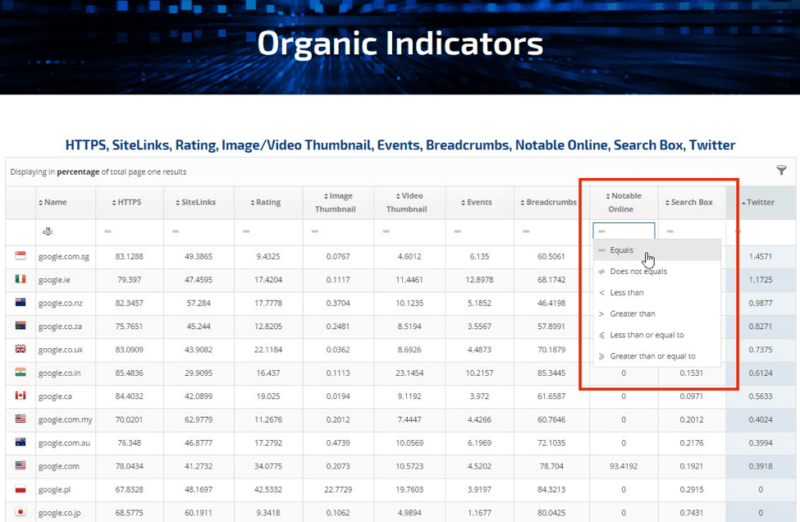
Figure 10: Filtering Organic Indicators
You can sort the country sites by SERP feature, and you have the ability to filter, so you can zero in on countries where a particular Google SERP feature is prevalent.
This tool is great for providing the big picture overview of what the SERP landscape looks like today and how it is evolving. Then, as you drill deeper, country by country, you can see what Google is focused on and adjust your SEO strategy accordingly.
One thing I would like to see added is a breakdown of mobile metadata characteristics to get insights into impacts on both mobile long-tail and local search.
This “bird’s-eye view” of SERP feature big data is obviously useful to both the SEO practitioner and the geekier business owner for both experimentation and strategic planning. However, don’t overlook the benchmarking opportunity it presents. You can build up a baseline of your SERP feature performance now, compare to the overall benchmarks from the tool, and monitor your progress periodically going forward.
Not bad for a free tool, eh?
Contributing authors are invited to create content for Search Engine Land and are chosen for their expertise and contribution to the search community. Our contributors work under the oversight of the editorial staff and contributions are checked for quality and relevance to our readers. The opinions they express are their own.
Related stories
New on Search Engine Land